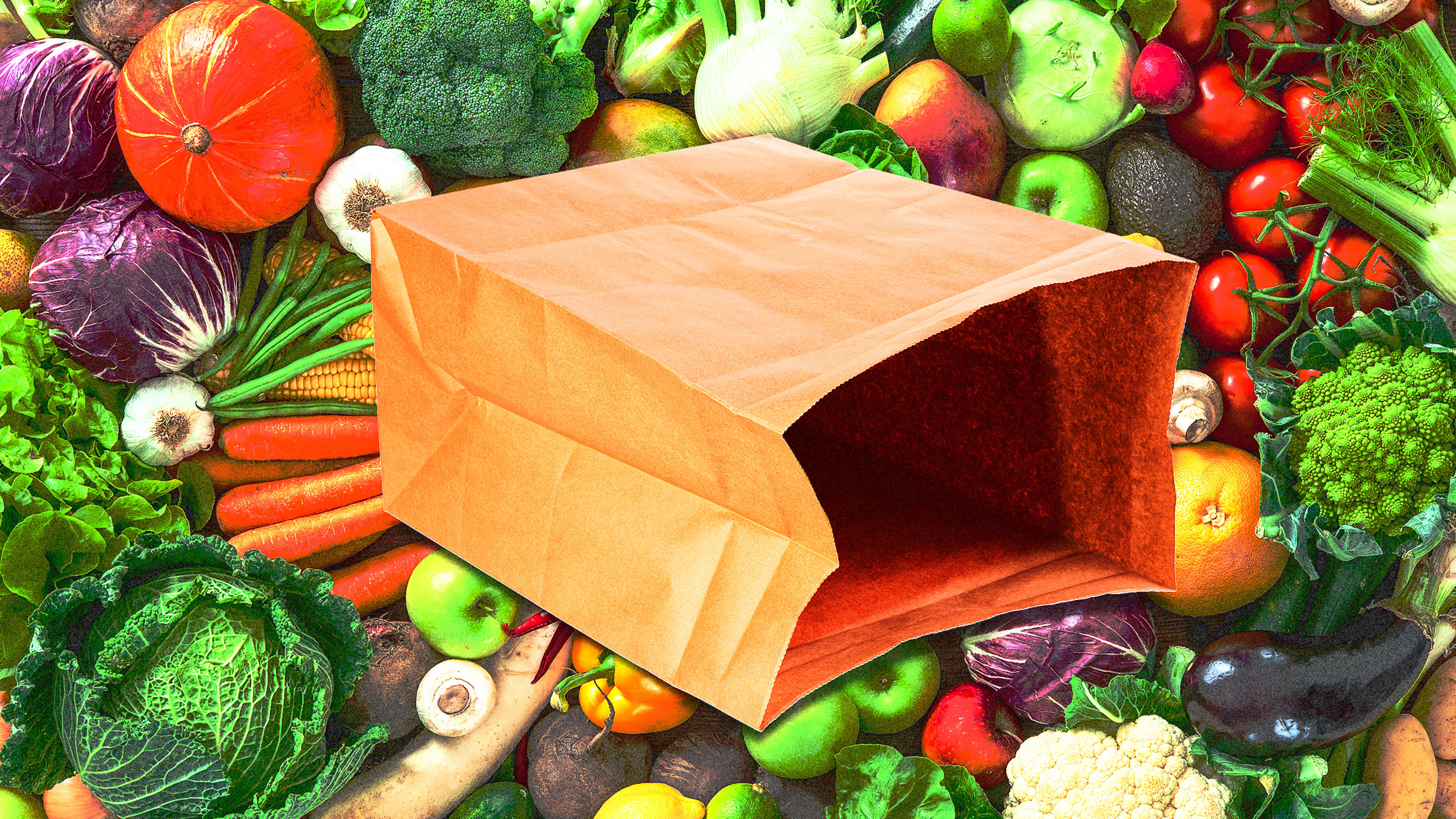In two-thirds of the U.S., especially bluer states in the Northeast, groceries are exempt from sales tax, the kind you’d pay when buying items like clothes and furniture. For those Americans, the idea that their fellow citizens could be paying taxes on food bought from grocery and convenience stores might seem totally alien. But in the states that allow them, grocery taxes can be a significant toll on poorer families—and a major contributor to whether they are food insecure.
In the first study to make a connection between the two, researchers concluded there’s a positive correlation between states that impose grocery taxes, and the probability of food insecurity among their lower-income residents. Around the country, 11.1% of all households—and 35.3% of poor households—are uncertain about consistent access to nutritious food (that’s worsened during the pandemic; an estimated 54 million people were insecure last October). Researchers also found that states debating to reduce or eliminate the tax would experience a sizable drop in food insecurity.
In 2020, 16 states had some form of grocery tax in place, at a national average of 4.2%. There was a 4% rate across most of Alabama, 4.5% in Oklahoma, and 6.5% in Kansas. In many states, counties and cities will add on further grocery taxes: In Tuscaloosa, Alabama, residents pay closer to an extra 10% total for every trip to the grocery store. The states with highest rates also tend to be the ones with the highest food insecurity: five of the seven most food-insecure states have a grocery tax. Though Louisiana doesn’t have a statewide tax, 45 of its 64 counties impose 4% or more—and those counties account for 77% of its poor residents.
The trend led a team of researchers to consider the hypothesis that grocery taxes would cause more food insecurity among those earning less than $30,000 per year. They merged a dataset on household food insecurity with one on grocery tax rates from 2006 to 2017. After controlling for a number of other factors that cause food insecurity—including demographic and educational variables, mental illness or physical disabilities in households, and participation in the SNAP program—they observed a “significant positive correlation,” says Harry Kaiser, professor of applied economics and management at Cornell University, and one of the co-authors of the study.
In parts of Alabama, where the total grocery tax burden is 9%, just the taxes can equate to $630 in additional yearly expenses. “That is going to have major ramifications,” Kaiser says. “The grocery food tax is considered very regressive—probably the most regressive tax,” Kaiser says, meaning they disproportionately affect poorer people, since they tend to spend a bigger chunk of their income on groceries. “They’re going to be paying a much bigger share of their budget than a millionaire,” he says, “who’s going to be paying virtually nothing in terms of their budget.”
The report also highlights ongoing policy proposals around grocery taxes being debated in various states. Using their model, they simulated the proposed changes, finding that Alabama’s food insecurity would go down by 3.2% if it followed through on a proposal to drop its 4% sales tax on groceries. Idaho’s would go down by 4.5% if its 6% tax was cut. In contrast, if West Virginia, already the seventh most-food-insecure state, went ahead with its plan to reinstate an 8% tax, food insecurity would go up by 5%.
The researchers highly recommend that states get rid of their sales taxes on groceries, and hope the study can serve as evidence for policymakers. “Arguably, one of the first tasks of a policy agenda seeking to reduce health inequity is to remove policies that exacerbate inequity,” the report reads. Adds Kaiser: “Eliminating that tax, or somehow shielding the poor people from it, is something that should be very much considered if you want to do something about food insecurity in the United States.”
Of course, states need revenue sources, but they can learn from the majority of states that don’t impose grocery taxes—”simply because food is considered a necessity.” A major source of revenue for many of these states is income and property taxes, considered “progressive,” because they’re a bigger burden on richer people. Many of the states that impose grocery taxes are red states in the South, some of which don’t have an income tax at all, and very low property taxes (Alabama’s average is 0.48%). “My speculation is it just tends to be more of a conservative point of view on taxation,” Kaiser says.
While he says that grocery tax credits or rebates for the very poorest could shield those most vulnerable from the expense, as some states do, Kaiser calls that merely a “second-best solution.” Their research shows that eliminating a 4.2% tax entirely would reduce food insecurity by 3.5%. “That’s pretty sizable.”
Recognize your brand’s excellence by applying to this year’s Brands That Matter Awards before the early-rate deadline, May 3.
